
Xiaomi has had a lot of success with its A series that provide stock Android experience. MI A1 the first entry in this series. Then came the Mi A2, which for its time had great cameras for the price. Believe me, I previously used both the device and was quite impressed by both of them. Keeping my past experiences with the Mi A series in mind, my expectations for the Xiaomi Mi A3 was quite high. It is a device that is once again targeted at the budget segment.
So, I started using this device for my everyday use for almost over 2 weeks now and honestly, it seems good and has, in fact, left an impression on me. But with a plethora of devices available in the budget segment now, it made me wonder whether this device has enough in it to make the cut and stand on top as the winner of the mid-range segment? Let’s find that out in this Xiaomi MI A3 review.
Xiaomi Mi A3 Specifications
- Design: Glass body front and back, Aluminum frame
- Display: 6.01″ Super AMOLED display with Gorilla Glass 5 Protection
- Resolution: HD+ resolution (720 x 1560 pixels) @ 286 PPI
- Rear Camera: Triple, 48 MP primary lens with f/1.8 aperture + 8 MP Ultra-wide-angle lens with f/2.2 aperture + 2 MP depth sensor f/2.4 aperture
- Front Camera: 32 MP f/2.0 aperture
- OS: Android 9.0; Android One
- Chipset: Qualcomm Snapdragon 665; 11nm platform
- CPU: Octa-core (4×2.0 GHz Kryo 260 Gold & 4×1.8 GHz Kryo 260 Silver)
- GPU: Adreno 610
- RAM: 4GB/6GB
- Storage: 64GB/128GB; Expandable up to 256GB via SD card slot
- Battery: 4030 mAh, 18-W Fast Charging
- Sensors: Fingerprint (under display), accelerometer, gyro, proximity, compass
- Price: Rs. 23,999 (4/64GB) | Rs. 27,999 (6/128GB)
Design
In terms of its design, the MI A3 does bring in a lot of improvement as compared to its predecessor. It has a metal + glass design with both the front and the back protected by Gorilla Glass 5. The use of this combination does, in fact, make this device seem like a premium offering.

Now, the one that I used was of ‘Not Just Blue’, Clear inspiration from the Pixel series! And to be honest my initial reaction was that, gosh this device feels cheap. The design pattern changes with respect to light and despite not having a plastic back, the changes in the design gradient did make me feel so.
However, once I got used to it, contrary to my initial judgment, I did find the design quite mesmerizing. I felt that this design on the very least is what separates MI A3 from others and did make it stand out among the rest. So, be careful guys, the first impression might not always be the last impression.
Moving on, the device has just the right curves around the edges which makes holding the device very comfortable. The display is surrounded by thin bezels all around except the chin which to me seemed a bit bigger. And with the craze of all screen phones these days, I do feel that the chin bezel could have been reduced down a notch. Sticking to the subject of notch, MI A3 does have a waterdrop notch to house the front camera.
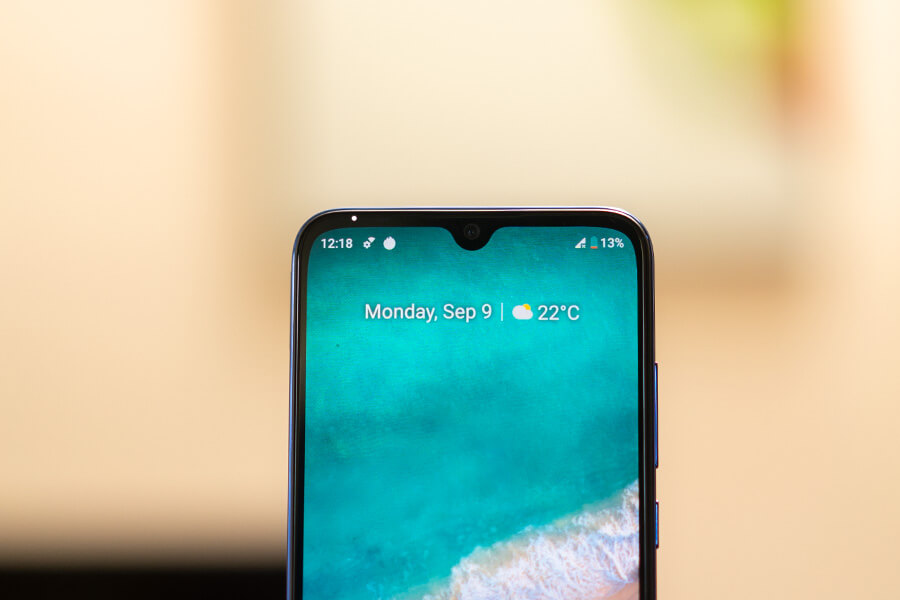
On the bottom, there’s a single speaker rim right next to the USB-C port. The grille is divided on either side of the port however the one on the left, it seems purely exists the purpose of making it look symmetrical. Despite only having a single speaker, you won’t have to worry about the sound being drowned down as they are sufficiently loud and the audio quality is also pretty good. Furthermore, not to forget, a 3.5mm headphone jack makes its comeback in this series.
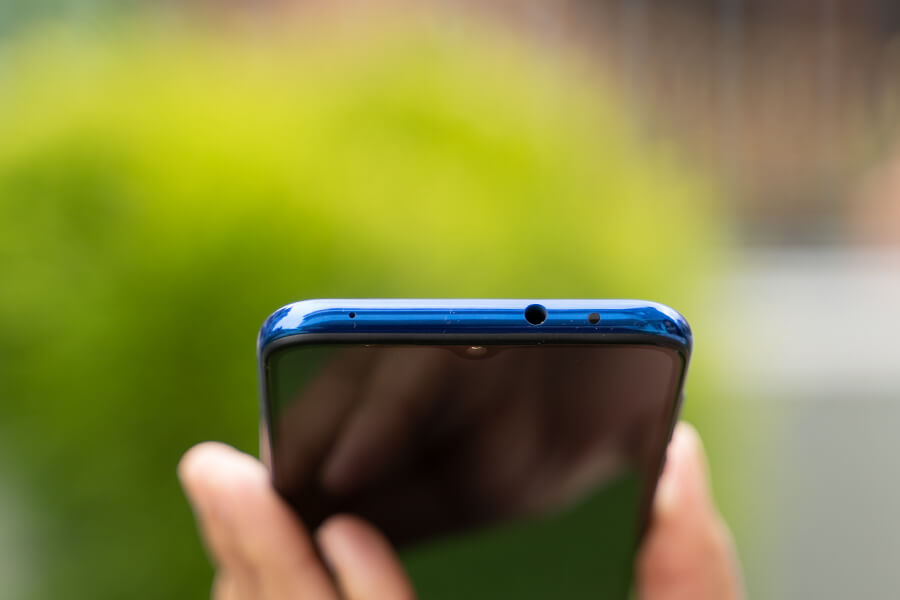
Obviously, there’s a divided opinion about the headphone jacks as many of you now are venturing towards earbuds and all. But wired headphones does have its own separate fanbase. And I am one of them and thus the inclusion of the 3.5mm jack is a welcome change in this device.
Display
As far as the display is concerned, MI A3 uses a 6.08-inch Super AMOLED display. Considering the price, the S-AMOLED display does sound like a really good offering. However, the screen resolution is just 720p, which is the compromise I am talking about in the title. So, you might notice multiple instances of pixelation and to add to that the sunlight visibility is average at best. The struggle to make out what the screen is showing is real.
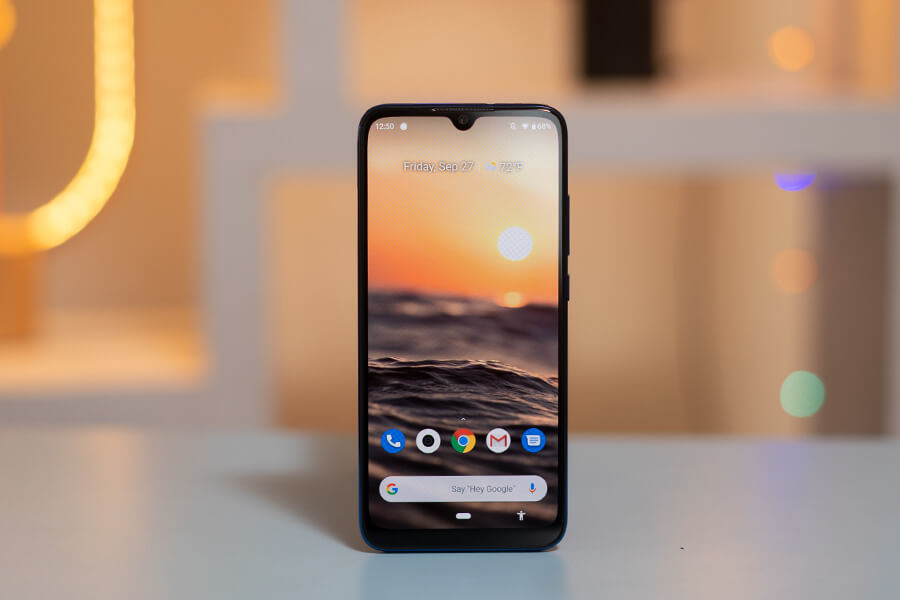
Now, you get a Redmi Note 7 Pro for just about the same price. And despite not having an AMOLED screen it does give a full HD display. As a matter of fact, most of the mid-range phones nowadays come with a Full-HD display. So, the tradeoff between the AMOLED display and a 720p resolution didn’t really sit well with me.
Furthermore, as the current trend goes for devices featuring an AMOLED screen, there, in fact, is an in-display fingerprint sensor on MI A3 too. However, it is not up to the standard. It feels painfully slow. So, in that regard, I consider the use of an AMOLED display on this device pretty much useless.
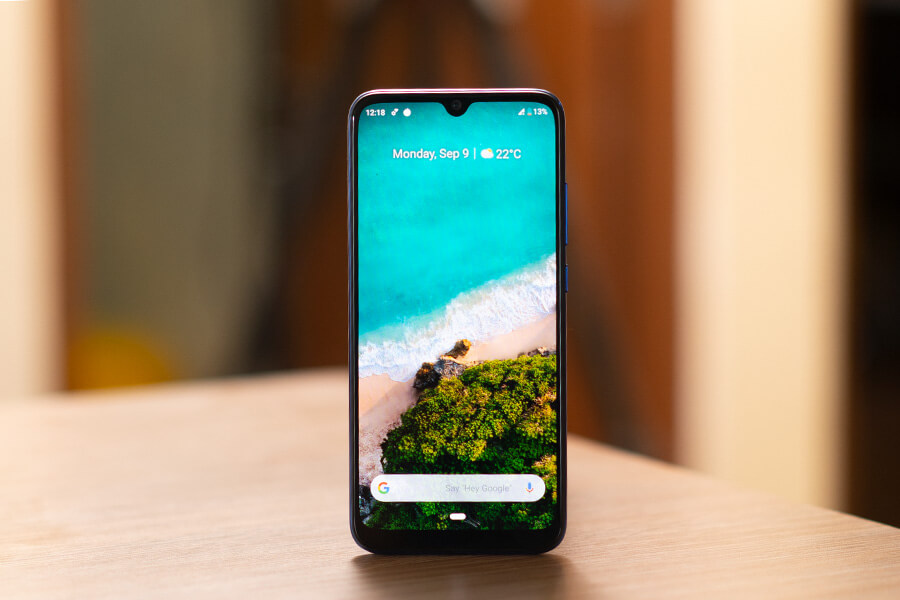
It may give a premium feel to the device but considering the screen resolution and an abysmal in-display fingerprint sensor, it would’ve been better if they had stuck with an LCD display.
Camera
People these days are certainly more concerned about the quality of snaps their device than other features. And this action is absolutely justified. Smartphone cameras have pretty much replaced the digital cameras. So, it’s obvious for people to judge the quality of their phone based on its camera performance. And the Mi A3 for what it costs actually shoots quality photos. Mind you, the shots are not exactly mind-blowing, but they do provide Insta quality photos.
The rear camera has a triple camera setup with a primary lens of 48MP, an 8MP wide-angle lens, and a 2MP depth sensor. The images shot by the rear camera though does not necessarily provide natural-looking photos, however, their viewing experience is actually enjoyable. And that’s because the camera seems to emphasize a lot on certain colors in an image. Furthermore, its camera does capture a range of colors and lighting pretty well and is able to produce a good quality image.
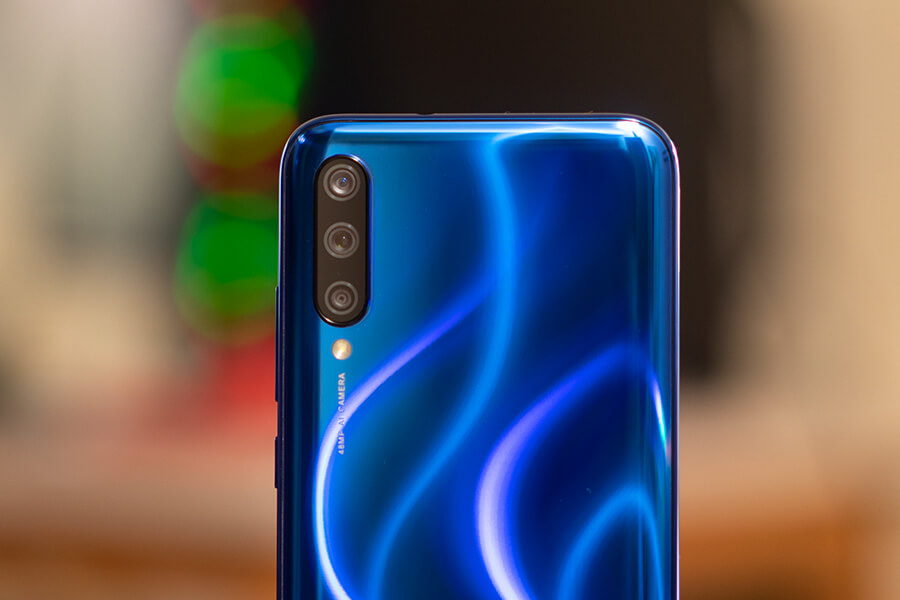
The enjoyable viewing experience of the photos can be further complemented to the devices’ display which is an S-AMOLED panel.
I mean I took the same images with the Mi A3 and the Note 7 Pro, and despite them having the same camera sensor, the photos in the Mi A3 seemed more pleasing to the eye.
However, I think that most of the difference in the quality was there due to the different display panels that the phones have. Isn’t it obvious that the images while viewed on an AMOLED panel will seem better than the one viewed on an LCD display? So, to better compare the photos, I uploaded them on my laptop. And surprise surprise, I found the images taken from the Note 7 Pro had better quality.
The photos from Note 7 Pro captured light much better. Its brightness level was great and overall, I felt that the images resembled the actual scenario. In comparison, the ones captured from the Mi A3 came out darker.
You can see from these images that even when captured in the same lighting conditions, the photos from the Note 7 Pro look much brighter and the ones from Mi A3 appear duskier. The background also looks much better, lighter and overall good on the one captured from the Note 7 Pro.
However, while comparing the portraits from the rear camera, I felt that the Note 7 Pro provided a much better portrait photo with greater level of edge detection and blurring effect.
The added wide-angle lens on the Mi A3, are also decent for capturing more when you need it. This lens is not there on the note 7 Pro, so no comparison between them here, but generally speaking the wide-angle lens is pretty much good at what it does.
You can switch into the 48MP mode to make the full utilization of its primary lens. However, I did not find myself using it so often as its normal camera mode, in fact, did a pretty great job in itself and using the 48MP camera did nothing but take up more memory space.
The phone, however, does struggle to take low light images. Comparing the low-light samples from both the Mi A3 and the note 7 Pro I found neither of them being able to capture a good quality image.
Now turn for the 32 MP selfie shooter housed in the waterdrop notch upfront. The camera produces fine results, ones that will certainly make you feel good. As with the rear camera, the selfies too give out similar results. They seem brighter than the one on the Note 7 Pro and seem livelier. So, the selfies captured on Note 7 Pro would be my choice if I had to give one out showing a much natural-looking image.
There aren’t added beautify features in the Mi A3 however, there is an AI camera mode similar to that on the Note 7 Pro. The AI camera provides better image algorithms for capturing photos. Here the use of SD 675 on the Note 7 Pro and SD 665 on Mi A3 comes into play as the note 7 Pro, using a much better SoC is able to use better AI algorithms and better processing for the images.
Performance
Mi A3’s performance is as one would expect from a mid-range smartphone. Smooth transitions as well as the fluid running of apps and no bloatware (courtesy of Android One). The Snapdragon 665 chipset used in this device works fine for day-to-day use.
Normal users who simply use their smartphones to browse the internet, watch videos or send emails, will be pleased by the device’s performance. Though one area of complaining for them would be in the camera app. That’s because the response time while switching between different photo mode is actually quite high. So, if you are in a hurry and want to take a picture quickly, the Mi A3 might just betray you there.
But, for PUBG players, the thing to keep in mind here is that the Mi A3’s display constraints won’t allow you to switch your graphics settings above Balanced nor will you be able to increase the frame rate above the medium setting.

That’s the maximum combination for the display setting you can play PUBG on the MI A3. And its all down to the HD display and the capability of the chipset i.e. SD 665.
So performance-wise, as far as playing PUBG is concerned, I’d have to give it to the Note 7 Pro. It allows you to change the display setting to HD with the frame rates set at a High level.
Regardless, if you are content with a minimum display setting while playing games such as PUBG and Asphalt 9, Mi A3 will work out just fine as I’m certain with stable connectivity you will not feel any lags while playing games.
Moving on towards its battery life, the 4030mAh battery offers a good battery life if you just browse through the internet and do not engage in heavy gaming. However, I did not find the devices stand-by battery to be as good as many out there claim. I had mine charged up to 100% before I went to sleep. And when I woke up the battery was down to 93%. So that’s not so good, is it?
However, the upside is that the device does support 18W charging and thus even if you drain the battery completely the charging of the phone should not take much time. But again, it is something that you’ll have to buy separately as you only get a 10W brick in the box.
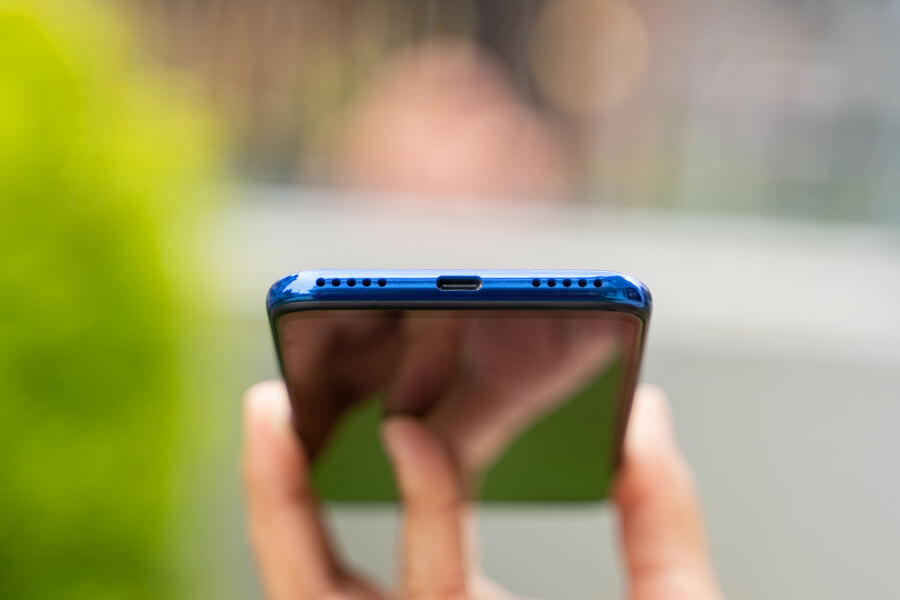
Now other than display, this is also something that bugged me. I mean, to me, the phone’s price already seems much more than what it should have actually cost and even if you’re going to give HD display to your customers, the least you can do is include an 18W charger to help achieve its full potential.
Now, to the device’s prime feature, the Android One software. Its use does mean that the device is free of bloatware, has faster updates and longer supports. However, the absence of custom apps might be an issue for some users. But a clean smartphone using experience that’s almost similar to the Pixel was something that left me smitten.
Verdict
So, did the mi A3 meet my expectations? Well, on some level it certainly did. A triple camera array, an S-AMOLED screen and Android One experience. But is it enough to woo me to go for the phone? I would if the phone was priced just a couple of thousand bucks less. Or if Xiaomi had at least provided a Full HD display on this device.

As I mentioned earlier, the 25K segment is a pretty sensitive price segment considering smartphones. On one hand, there’s the Redmi Note 7 Pro with SD 675 and full HD display. So, for me, Note 7 Pro is the clear winner in this segment though it does not have an AMOLED screen and a wide-angle lens.
Having said that, for those who do not feel bugged by HD display and want to experience a Pixel like a phone without having to pay pixel price, I do recommend them to try the MI A3 trust me it won’t disappoint you!
Xiaomi MI A3 Pros and Cons
Pros:
- Good design
- Dependable battery life
- Stock Android
Cons:
- Low resolution and dim display
- Slow fingerprint scanner














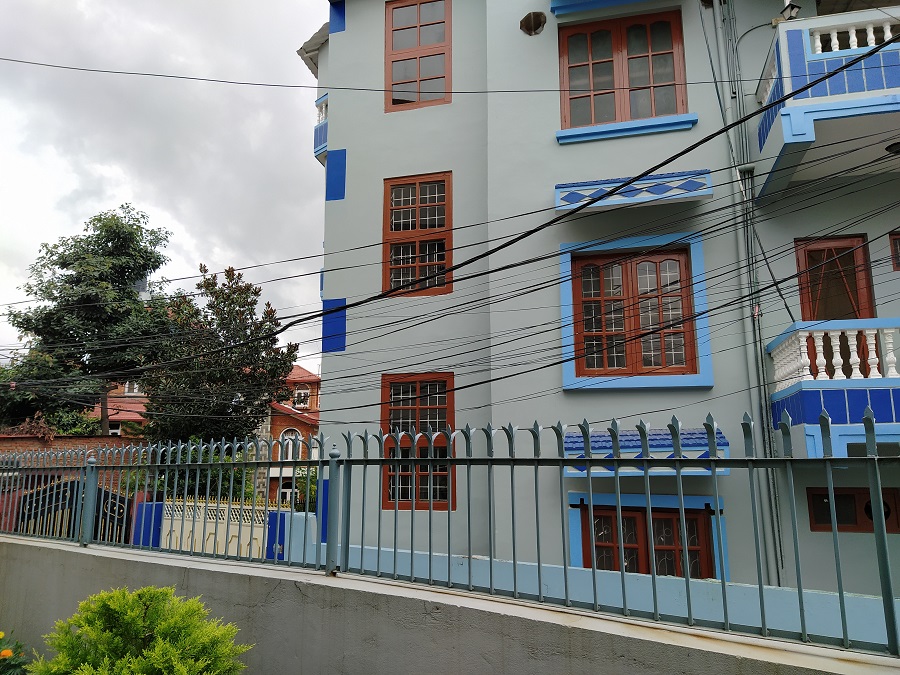

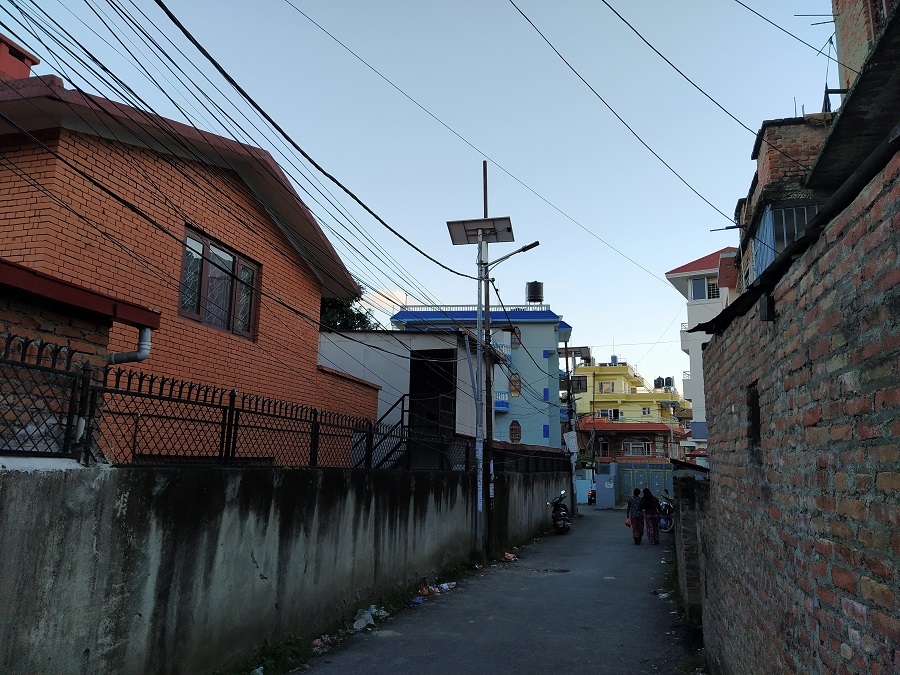







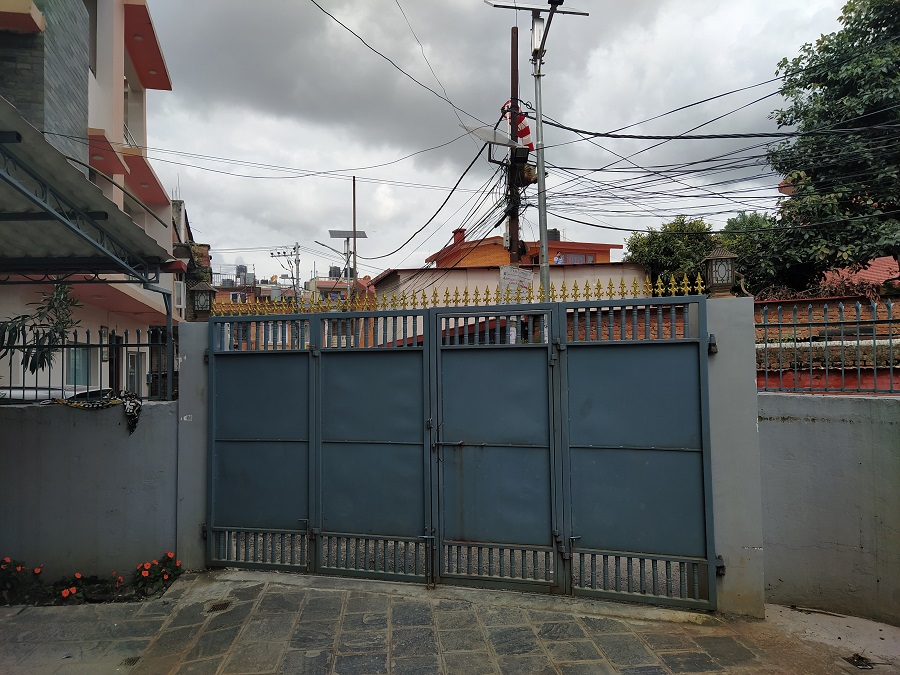

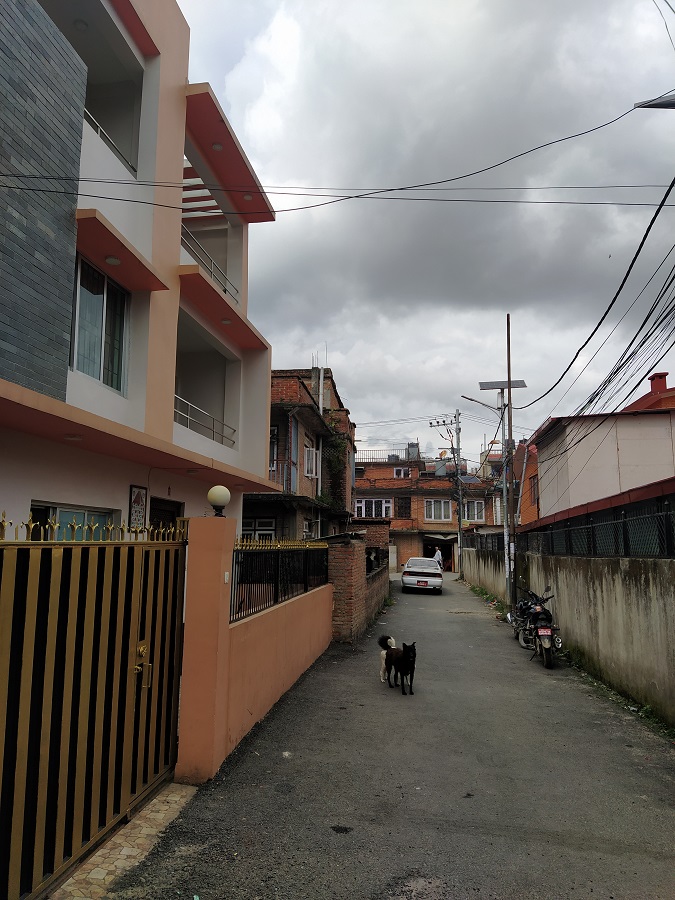

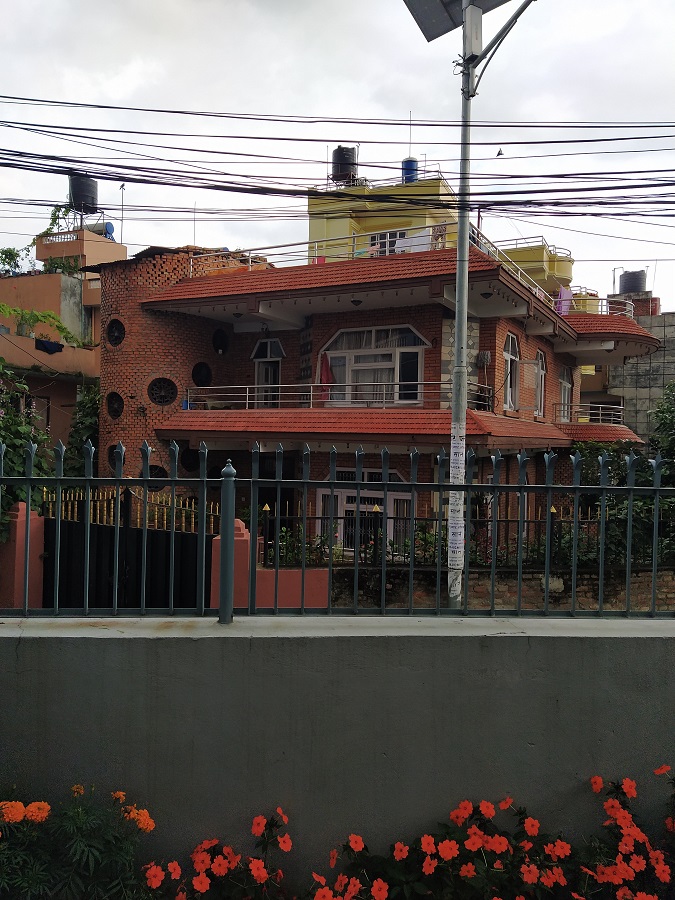
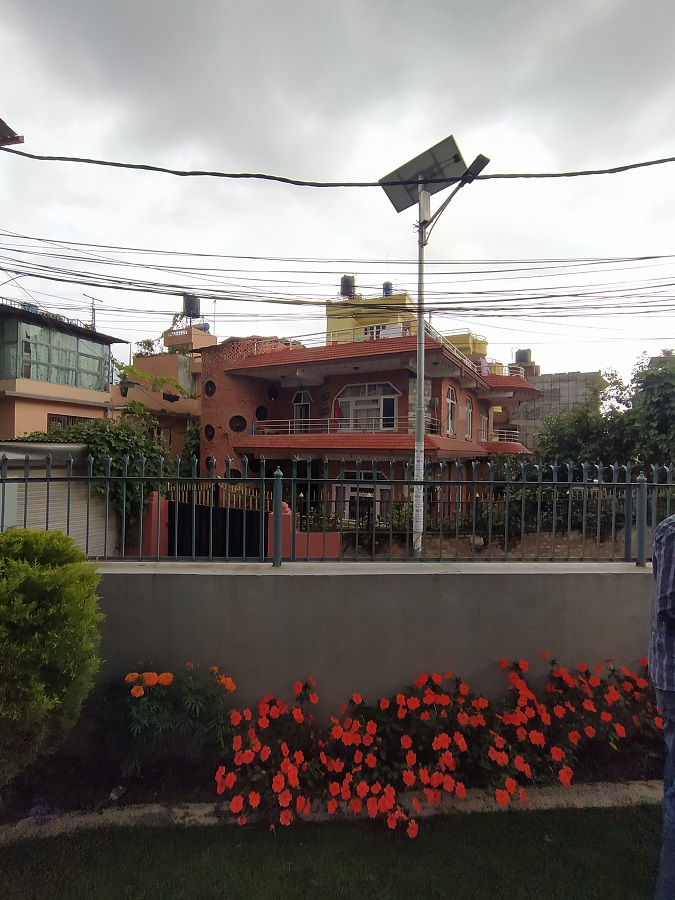
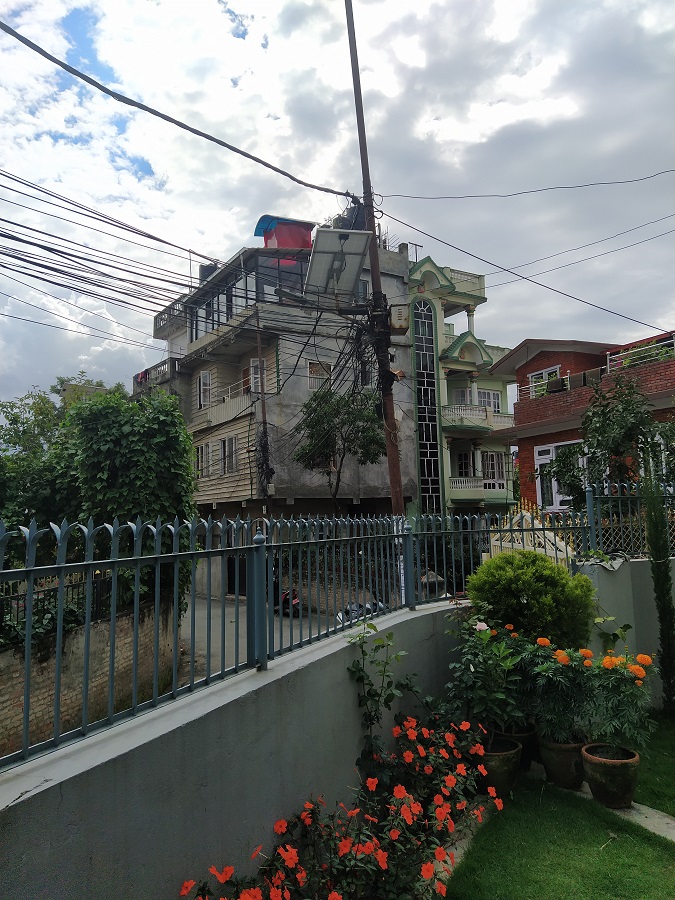


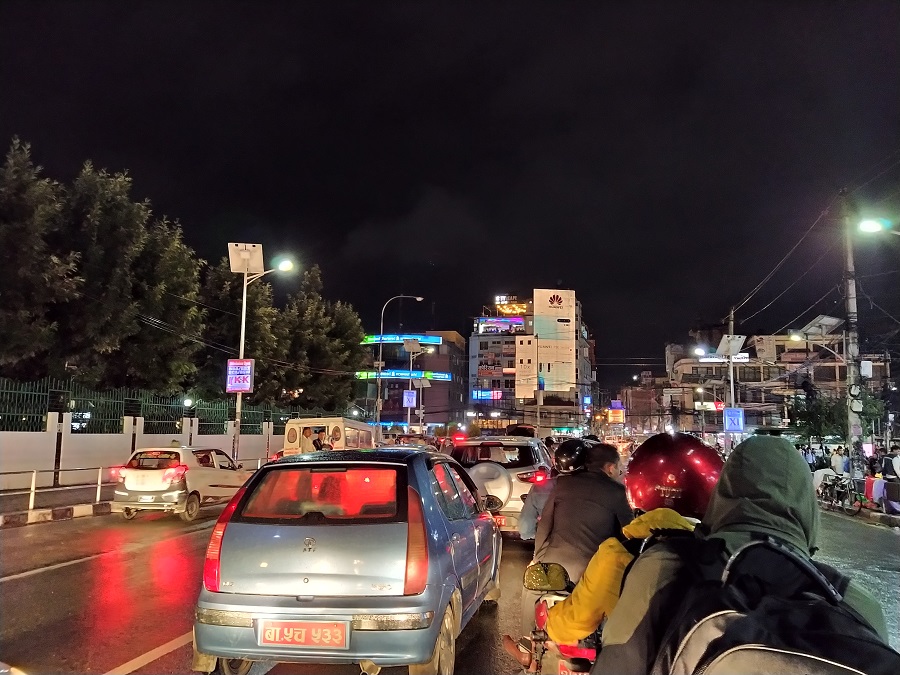
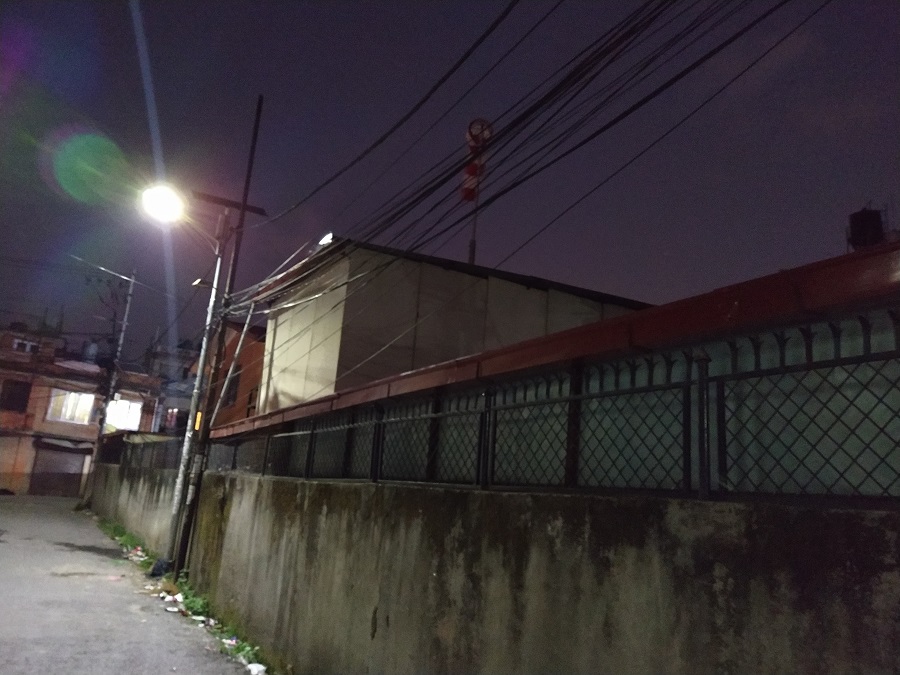

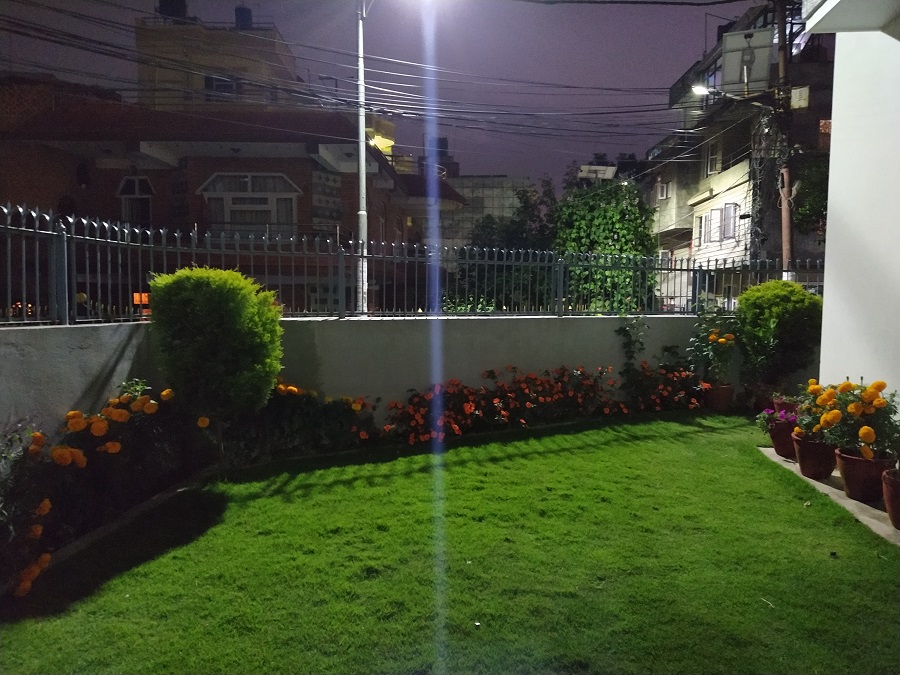

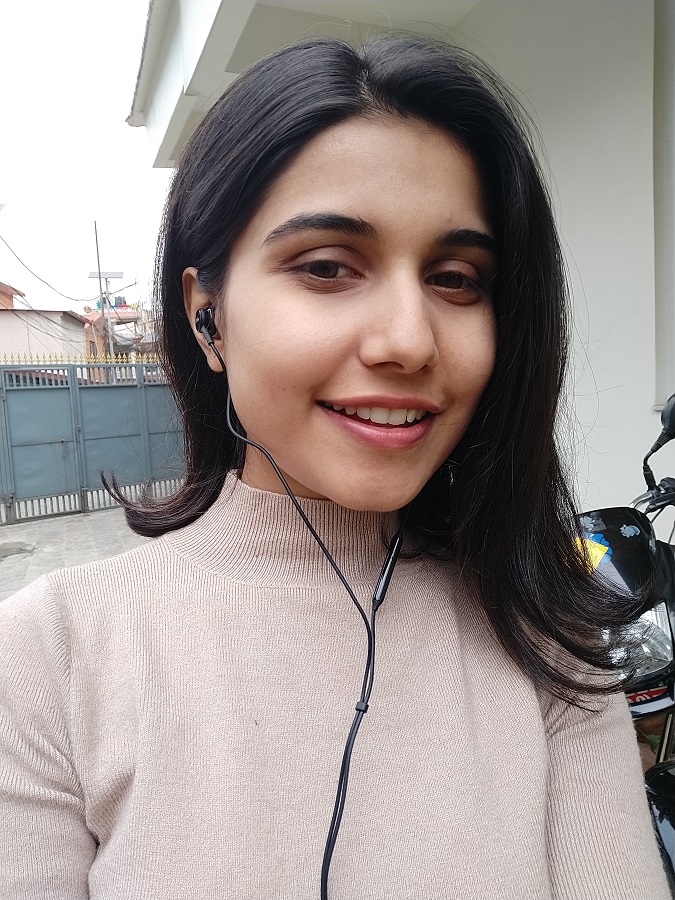










![Best Gaming Laptops in Nepal 2024 [Updated] Best Gaming Laptops in Nepal 2023 - June Update](https://cdn.gadgetbytenepal.com/wp-content/uploads/2023/04/Best-Gaming-Laptops-in-Nepal-2023-June-Update.jpg)




![Best Mobile Phones Under Rs. 15,000 in Nepal [Updated] Best Phones Under 15000 in Nepal 2024 Budget Smartphones Cheap Affordable](https://cdn.gadgetbytenepal.com/wp-content/uploads/2024/03/Best-Phones-Under-15000-in-Nepal-2024.jpg)
![Best Mobile Phones Under Rs. 20,000 in Nepal [Updated] Best Mobile Phones Under NPR 20000 in Nepal 2023 Updated Samsung Xiaomi Redmi POCO Realme Narzo Benco](https://cdn.gadgetbytenepal.com/wp-content/uploads/2024/01/Best-Phones-Under-20000-in-Nepal-2024.jpg)
![Best Mobile Phones Under Rs. 30,000 in Nepal [Updated]](https://cdn.gadgetbytenepal.com/wp-content/uploads/2023/12/Best-Phones-Under-30000-in-Nepal-2024.jpg)
![Best Mobile Phones Under Rs. 40,000 in Nepal [Updated] Best Phones Under 40000 in Nepal 2024 Smartphones Mobile Midrange](https://cdn.gadgetbytenepal.com/wp-content/uploads/2024/02/Best-Phones-Under-40000-in-Nepal-2024.jpg)
![Best Mobile Phones Under Rs. 50,000 in Nepal [Updated] Best Phones Under 50000 in Nepal 2024 Smartphones Midrange](https://cdn.gadgetbytenepal.com/wp-content/uploads/2024/02/Best-Phones-Under-50000-in-Nepal-2024.jpg)
![Best Flagship Smartphones To Buy In Nepal [Updated] Best Smartphones in Nepal 2024 Flagship Premium Samsung Apple iPhone Xiaomi OnePlus Honor](https://cdn.gadgetbytenepal.com/wp-content/uploads/2023/09/Best-Smartphones-in-Nepal-2024.jpg)